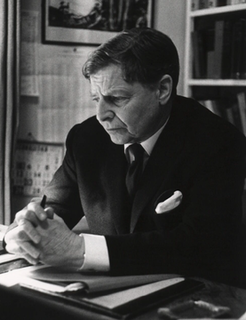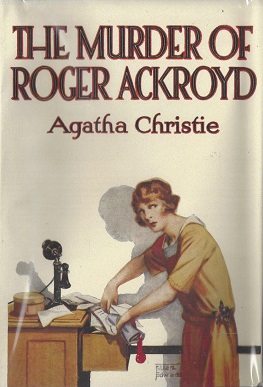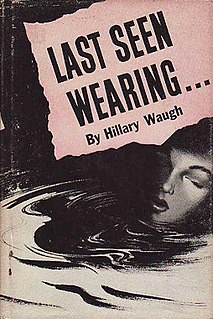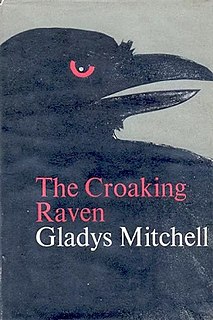
Detective fiction is a subgenre of crime fiction and mystery fiction in which an investigator or a detective—either professional, amateur or retired—investigates a crime, often murder. The detective genre began around the same time as speculative fiction and other genre fiction in the mid-nineteenth century and has remained extremely popular, particularly in novels. Some of the most famous heroes of detective fiction include C. Auguste Dupin, Sherlock Holmes, and Hercule Poirot. Juvenile stories featuring The Hardy Boys, Nancy Drew, and The Boxcar Children have also remained in print for several decades.

Crime fiction, detective story, murder mystery, mystery novel, and police novel are terms used to describe narratives that centre on criminal acts and especially on the investigation, either by an amateur or a professional detective, of a serious crime, generally a murder. It is usually distinguished from mainstream fiction and other genres such as historical fiction or science fiction, but the boundaries are indistinct. Crime fiction has multiple subgenres, including detective fiction, courtroom drama, hard-boiled fiction, and legal thrillers. Most crime drama focuses on crime investigation and does not feature the courtroom. Suspense and mystery are key elements that are nearly ubiquitous to the genre.

Josephine Tey was a pseudonym used by Elizabeth MacKintosh, a Scottish author. Her novel The Daughter of Time was a detective work investigating the role of Richard III of England in the death of the Princes in the Tower, and named as the greatest crime novel of all time by the Crime Writers' Association. Her first play Richard of Bordeaux, written under another pseudonym, Gordon Daviot, starred John Gielgud in its successful West End run.

The historical mystery or historical whodunit is a subgenre of two literary genres, historical fiction and mystery fiction. These works are set in a time period considered historical from the author's perspective, and the central plot involves the solving of a mystery or crime. Though works combining these genres have existed since at least the early 20th century, many credit Ellis Peters's Cadfael Chronicles (1977–1994) for popularizing what would become known as the historical mystery. The increasing popularity and prevalence of this type of fiction in subsequent decades has spawned a distinct subgenre recognized by the publishing industry and libraries. Publishers Weekly noted in 2010 of the genre, "The past decade has seen an explosion in both quantity and quality. Never before have so many historical mysteries been published, by so many gifted writers, and covering such a wide range of times and places." Editor Keith Kahla concurs, "From a small group of writers with a very specialized audience, the historical mystery has become a critically acclaimed, award-winning genre with a toehold on the New York Times bestseller list."

Samuel Dashiell Hammett was an American author of hard-boiled detective novels and short stories. He was also a screenwriter and political activist. Among the enduring characters he created are Sam Spade, Nick and Nora Charles, the Continental Op and the comic strip character Secret Agent X-9.

Dame Edith Ngaio Marsh was a New Zealand mystery writer and theatre director. She was appointed a Dame Commander of the Order of the British Empire in 1966.

John Dickson Carr was an American author of detective stories, who also published using the pseudonyms Carter Dickson, Carr Dickson, and Roger Fairbairn.

John Innes Mackintosh Stewart was a Scottish novelist and academic. He is equally well known for the works of literary criticism and contemporary novels published under his real name and for the crime fiction published under the pseudonym of Michael Innes.

The Murder of Roger Ackroyd is a work of detective fiction by British writer Agatha Christie, first published in June 1926 in the United Kingdom by William Collins, Sons and in the United States by Dodd, Mead and Company. It is the third novel to feature Hercule Poirot as the lead detective.

The Daughter of Time is a 1951 detective novel by Josephine Tey, concerning a modern police officer's investigation into the alleged crimes of King Richard III of England. It was the last book Tey published in her lifetime, shortly before her death. In 1990 it was voted number one in The Top 100 Crime Novels of All Time list compiled by the British Crime Writers' Association. In 1995 it was voted number four in The Top 100 Mystery Novels of All Time list compiled by the Mystery Writers of America.
Otto Penzler is a German-born American editor of mystery fiction, and proprietor of The Mysterious Bookshop in New York City.

Last Seen Wearing ... (1952) is a detective novel by Hillary Waugh frequently referred to as the police procedural par excellence. Set in a fictional college town in Massachusetts, the book is about a female freshman who goes missing and the painstaking investigation carried out by the police with the aim of finding out what has happened to her.

Kenneth Martin Edwards is a British crime novelist, whose work has won awards in the UK and the United States. As a crime fiction critic and historian, and also in his career as a solicitor, he has written non-fiction books and many articles. He is the current President of the Detection Club and in 2020 was awarded the Crime Writers’ Association's Diamond Dagger, the highest honour in British crime writing, in recognition of the ‘sustained excellence’ of his work in the genre.

The Killings at Badger's Drift is a mystery novel by English writer Caroline Graham and published by Century in 1987. The story follows Chief Inspector Tom Barnaby investigating the murder of an elderly spinster in a rural village. It is the first volume in Graham's Chief Inspector Barnaby series, followed by Death of a Hollow Man. In 1997, it was adapted as the pilot of Midsomer Murders, a popular ITV television series based on Graham's books.

The Mystery of a Hansom Cab is a mystery fiction novel by Australian writer Fergus Hume. The book was first published in Australia in 1886. Set in Melbourne, the story focuses on the investigation of a homicide involving a body discovered in a hansom cab, as well as an exploration into the social class divide in the city. The book was successful in Australia, selling 100,000 copies in the first two print runs. It was then published in Britain and the United States, and went on to sell over half a million copies worldwide, outselling the first of Arthur Conan Doyle's Sherlock Holmes novels, A Study in Scarlet (1887).

Smallbone Deceased is a 1950 mystery novel by the English author Michael Gilbert, published in the United Kingdom by Hodder and Stoughton and in the United States by Harper & Brothers. A practising lawyer himself, Gilbert made the setting of the novel a London solicitor's office. It was Gilbert's fourth novel and, like his three earlier ones, features Chief Inspector Hazlerigg. The novel was well-received and has regularly appeared in "Top 100" crime lists. Some critics consider it to be Gilbert's best work.
John Michael Drinkrow Hardwick, known as Michael Hardwick, was an English author who was best known for writing books and radio plays which featured Sir Arthur Conan Doyle's creation Sherlock Holmes. He adapted most of the episodes of the Sherlock Holmes BBC radio series 1952–1969.
John Laurence Pritchard was a British mathematician and writer specialising in works on aviation. He also wrote detective novels and works about criminology using the pseudonym John Laurence.

The Croaking Raven is a 1966 mystery detective novel by the British writer Gladys Mitchell. It is the thirty ninth in the long-running series of books featuring Mitchell's best known creation, the psychoanalyst and amateur detective Mrs Bradley. The title is taken from a line from Shakespeare's Hamlet "the croaking raven doth bellow for revenge".
















